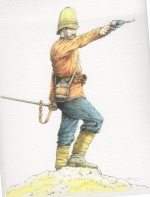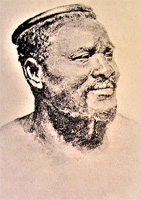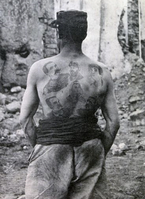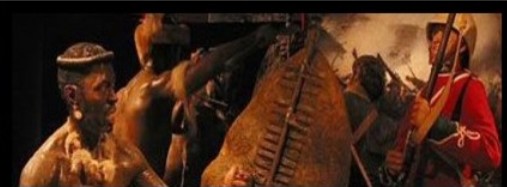| Latest topics | » The Pictorial World - March 15th 1879 Yesterday at 1:13 pm by ben2000 » The lost diary of Pvt James Owen Thu Jul 25, 2024 12:03 pm by miklew » Last of the 24th at Isandhlwana Wed Jul 24, 2024 6:16 pm by John Young » What was the uniform of field marshals/generals in the zulu war? Mon Jul 22, 2024 6:53 am by John Young » Henderson and the NNH at Rorke's Drift  Sat Jul 20, 2024 12:17 pm by SRB1965 » Capt. D. Hayes 1/3rd Regt., NNC Thu Jul 18, 2024 11:11 am by Julian Whybra » The Wrecked Camp Wed Jul 17, 2024 4:33 pm by Julian Whybra » Private N/N John Robert Branch 90th Regiment and his discovered diary Mon Jul 15, 2024 8:53 pm by 1879graves » Private John Scott 24th Regiment a fugitive at large Sun Jul 14, 2024 12:06 pm by 1879graves » 90th foot sgt T. Collins 214 Sun Jul 14, 2024 10:57 am by johnman » Baron Von Steitencron Wed Jul 10, 2024 3:10 pm by Julian Whybra » Sgt Joseph Windridge, Defender of Rorke's Drift - Memorial Tue Jul 09, 2024 3:15 am by 90th » Writing advice Sun Jul 07, 2024 4:04 pm by Julian Whybra » South Africa 1877-79, 1 clasp, 1877-8-9 (4389 Fr. Sergt. S. Smith. O/2. Bde. R.A.) Sun Jul 07, 2024 9:30 am by rai » The trashing of the Zulu monument to the brave warriors at Isandlawana March 12, 2024 has been blamed on scrap metal scavengers. Thu Jul 04, 2024 7:41 pm by ADMIN» The Goodwill Zulu Festival: Celebrating the Welsh and KwaZulu Natal Shared Heritage. Thu Jul 04, 2024 7:27 pm by ADMIN» Any nominal role of G Coy 2/24th regiment  Thu Jul 04, 2024 11:18 am by Wayne » Bassage Diary Thu Jul 04, 2024 9:31 am by Julian Whybra » Prior to Sihayo's Kraal  Thu Jul 04, 2024 9:19 am by 90th » British Fort Locations Thu Jul 04, 2024 3:40 am by 90th » Sergeant 1064 Tom Hick / Hicks G Company 2/24th Regiment Wed Jul 03, 2024 11:05 am by Julian Whybra » A Hungarian soldier in the Zulu War (?) Fri Jun 28, 2024 2:31 pm by Mr M. Cooper » Private 25B/279 Henry Sears Bugler E Company 24th Reg. KIA Isandlwana Thu Jun 27, 2024 1:07 pm by gardner1879 » Hamilton Browne's birthday Fri Jun 21, 2024 9:22 am by Julian Whybra » Zulu "Corps" Thu Jun 20, 2024 6:01 pm by Hobbes » Army Pay Department Personnel Thu Jun 20, 2024 11:49 am by Julian Whybra » Ntshingwayo birth date Sun Jun 16, 2024 11:37 am by Hobbes » Zibhebhu and Cetshwayo's family Wed Jun 05, 2024 9:11 pm by Julian Whybra » Smith's Store/Hotel Wed Jun 05, 2024 6:06 pm by Julian Whybra » Corporal James Frowen Williams F Company.  Tue Jun 04, 2024 5:20 pm by Julian Whybra » Shaka iLembe Sat Jun 01, 2024 1:27 pm by Jon84 » Bugler 1415 Thomas Finn / Flin 90th Regiment  Sat May 25, 2024 11:28 am by johnman » Inspector-General Evelyn Richard Hugh Pollard Tue May 14, 2024 10:13 am by ADMIN» Alfred Fairlie Henderson photographs. Sat May 11, 2024 8:01 am by Julian Whybra » Fairlie's Native Police Thu May 02, 2024 9:12 pm by Hobbes |
| July 2024 | | Mon | Tue | Wed | Thu | Fri | Sat | Sun |
|---|
| 1 | 2 | 3 | 4 | 5 | 6 | 7 | | 8 | 9 | 10 | 11 | 12 | 13 | 14 | | 15 | 16 | 17 | 18 | 19 | 20 | 21 | | 22 | 23 | 24 | 25 | 26 | 27 | 28 | | 29 | 30 | 31 | | | | |  Calendar Calendar |
|
| Top posting users this month | |
| New topics | » The Pictorial World - March 15th 1879 Yesterday at 1:13 pm by ben2000 » The lost diary of Pvt James Owen Thu Jul 25, 2024 12:03 pm by miklew » Last of the 24th at Isandhlwana Wed Jul 24, 2024 5:53 pm by miklew » What was the uniform of field marshals/generals in the zulu war? Sun Jul 21, 2024 12:30 pm by darthvaix » Henderson and the NNH at Rorke's Drift  Fri Jul 19, 2024 1:29 pm by SRB1965 » Capt. D. Hayes 1/3rd Regt., NNC Wed Jul 17, 2024 10:52 pm by Julian Whybra » The Wrecked Camp Sun Jul 14, 2024 8:51 am by 61MECH » The trashing of the Zulu monument to the brave warriors at Isandlawana March 12, 2024 has been blamed on scrap metal scavengers. Thu Jul 04, 2024 7:41 pm by ADMIN» The Goodwill Zulu Festival: Celebrating the Welsh and KwaZulu Natal Shared Heritage. Thu Jul 04, 2024 7:27 pm by ADMIN |
| Zero tolerance to harassment and bullying. | |
Due to recent events on this forum, we have now imposed a zero tolerance to harassment and bullying. All reports will be treated seriously, and will lead to a permanent ban of both membership and IP address.
Any member blatantly corresponding in a deliberate and provoking manner will be removed from the forum as quickly as possible after the event.
If any members are being harassed behind the scenes PM facility by any member/s here at 1879zuluwar.com please do not hesitate to forward the offending text.
We are all here to communicate and enjoy the various discussions and information on the Anglo Zulu War of 1879. Opinions will vary, you will agree and disagree with one another, we will have debates, and so it goes.
There is no excuse for harassment or bullying of anyone by another person on this site.
The above applies to the main frame areas of the forum.
The ring which is the last section on the forum, is available to those members who wish to partake in slagging matches. That section cannot be viewed by guests and only viewed by members that wish to do so. |
| Fair Use Notice | | Fair use notice.
This website may contain copyrighted material the use of which has not been specifically authorised by the copyright owner.
We are making such material and images are available in our efforts to advance the understanding of the “Anglo Zulu War of 1879. For educational & recreational purposes.
We believe this constitutes a 'fair use' of any such copyrighted material, as provided for in UK copyright law. The information is purely for educational and research purposes only. No profit is made from any part of this website.
If you hold the copyright on any material on the site, or material refers to you, and you would like it to be removed, please let us know and we will work with you to reach a resolution. |
| | | Appendix 4, Neils Book |  |
|
+9impi Chelmsfordthescapegoat Taff price ADMIN nthornton1979 ymob xhosa2000 rusteze Frank Allewell 13 posters | |
| Author | Message |
|---|
nthornton1979

Posts : 154
Join date : 2011-01-18
Age : 44
Location : Runcorn, Cheshire, UK
 |  Subject: Re: Appendix 4, Neils Book Subject: Re: Appendix 4, Neils Book  Thu Mar 23, 2017 6:44 pm Thu Mar 23, 2017 6:44 pm | |
|
Thanks Frederic,
All deleted now. I think all those who were following the thread have read and digested my thoughts, so keeping the posts 'live' would serve no further purpose anyway.
Cheers
Neil
|
|   | | xhosa2000

Posts : 1183
Join date : 2015-11-24
 |  Subject: Re: Appendix 4, Neils Book Subject: Re: Appendix 4, Neils Book  Thu Mar 23, 2017 11:28 pm Thu Mar 23, 2017 11:28 pm | |
| Hammar sounds like quite a guy, i wonder how he was feeling
as events unfolded.. he did not speak English so his encounters
with the British must have been baffling to him at first, but he
went on to forge a career in Natal, and to think.. he walked over
250 miles on an injured leg.. things really were different back in
the day.. the article below is from the net.
To South Africa
A year later he decided to emigrate to the British colony of Natal in South Africa. Writing to his parents on 13 October 1878 from London, he said "On 15 October I am embarking on the steamer Balmoral Castle, a sturdy boat of almost 3000 tons, leaving from the West India Docks". Then in a letter in November he referred to the impending clash between British and Zulu forces: "... when I came to Durban, I found the situation very bad ... it would cost 15 to 20 pounds to go to Potchefstroom by post cart, carrying just a night bag. Even by ox wagon would be beyond means ... I couldn't stay in Port Natal (Durban) as I had not a penny ... after much discussion I decided to go first to Oskarsberg ..." (the Swedich Church Mission near Rorke's Drift in Northern Natal, under the Rev. Otto Witt). August walked 270 miles with an injured leg, and was met by Otto Witt. August wrote: "Otto said 'Greetings! August' ..... he had received notification of my arrival .... we mounted horses and immediately galloped to Oskarsberg ..... we made 20 kilometres in one and a half hours."
The imminent outbreak of hostilities between British and Zulu armies forced the Swedish family to abandon the mission at Rorke's Drift and August made his own way into the nearby hills. On 22 January 1879, he observed the activity of the Battle of Isandhlwana at a distance of five to six miles. This battle was one of the greatest defeats of the British army. Whilst trying to return to the Mission, he was cut off by a Zulu impi (regiment) and spent the night in the hills watching the epic resistance of the British forces at Rorke's Drift. Thus August Hammar on his arrival in Natal was unexpectedly connected with major events in its history. He sketched the scene of the battle at Isandlawana, and later the scene of the death of the French Prince Imperial in June 1879. This painting was later sent to his mother Empress Eugenie, the widow of Louis Napoleon. August became a member of Baker's Horse, a volunteer mounted regiment, and was with them in July 1879 at the defeat of the Zulu armies at Ulundi in Zululand. |
|   | | ymob

Posts : 2268
Join date : 2010-10-22
Location : France
 |  Subject: Re: Appendix 4, Neils Book Subject: Re: Appendix 4, Neils Book  Wed Jul 05, 2017 9:05 am Wed Jul 05, 2017 9:05 am | |
| - Frank Allewell wrote:
- Frederic
For your interest this is a list of sources and rough notes I have used.
Return of Natives killed or captured by the Zulus on or since 22 January BPP,C2367 ( Natal) Highlights the numbers of killed and captured to drive stolen cattle over the river.
Zibhebu/Gibson.
Statement on removing stolen cattle from Natal. Proof positive that Zibhebu did in fact cross the river.
George Smith ‘
Account by an eye witness’ Natal Mercury, 7 April 1879, splitting of the regiments.
Chard (WO32/7737) PRO. Commentary on the size of the enemy early in the morning.
"We were removing the thatch when a LARGE body of the enemy appeared on the hills to the SW." ( The fact that Chard specifically mentions a large body would tend to rule out the ‘straglers’ theory)
And
About 8 am the third column appeared in sight, the enemy who had been gradually advancing, falling back as they approached. ( Advancing to attack? )
The account prepared for Queen Victoria, Royal Archives:
Heading ( original document) Enemy re-appear
I thought at the time they were going to attack us. ( Chards conformation that there was a potential attack on the way)
Hook: mentions the men put on the roof to watch for attack and nervousness.
Letter from Chard to Queen Victoria 21st February 1880: repeats
Lord Chelmsfords letter 23rd Jan to BF. Bolsters two other comments of the same nature, There were a large body of Zulu in the second of the two groups. Confirms Chards comment.
Location of meeting between Zulu impi and Chelmsfords Column
Harford: journal ( Childs)
Symonds: Symonds Papers ( comments : ‘they looked like a 10 acre mealie field turned black’) Emphasises the size of the group they met.
Henry Fynn: States he recognized group as uThulwana
Maxwell Diary: mentions lone zulu charging
Exploration with Charles Aikenhead and Paul Garner.
George Swinny, Umsweanto.
Map of traditional route RD/iSandlwana. Ken Gillings
Im still convinced, Henry Fynn being the main reason, that the first meeting climbing out of the Manzimyama was with the uThulwana. That position is pretty well endorsed by other accounts, many of them. The sighting later in the morning, aprox 8 oclock, by the Zulus at RD, of the returning column led to the recrossing on the Mzinyathi and their retreat towards iSandlana via the traditionsl route. that route is visible from a distance as the old road crossed the last rise ( see the photos I published).
I will mark up a map later to show the various meeting points and sightings.
Cheers
Bonjour Frank, There is also the testimony given by Major Spalding. Cheers Frédéric |
|   | | | | Appendix 4, Neils Book |  |
|
Similar topics |  |
|
| | Permissions in this forum: | You cannot reply to topics in this forum
| |
| |
| |
